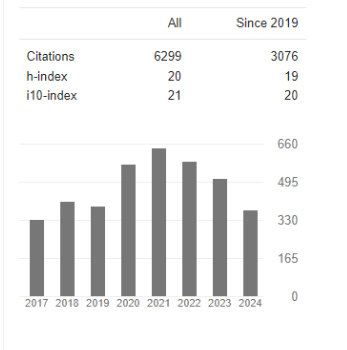Renal Nutcracker Syndrome: a Case Series and Systematic Review of an Uncommon and Underdiagnosed Condition
Abstract
Sajjaad H. Samat, Sean K. Park, Eric J. Weiler, Mohammad Torabi, Kyle Schank and J Lin
Introduction: Renal nutcracker syndrome (NCS) is a rare cause of chronic pain, hematuria, and urogenital issues. Most often NCS presents due to compression of the left renal vein (LRV) between the aorta and the superior mesenteric artery (SMA). The demographics and clinicopathologic features are not well recognized in the medical community broadly, leading to misdiagnosis and treatment that is ineffective. We present a systematic review of NCS case reports and case series, with the goal of establishing common features in presentation that will allow this condition to be more recognizable.
Method: A literature search was conducted through PubMed, SCOPUS, and Cochrane databases for the past 10 years (November 2012 to November 2022) for confirmed cases of NCS. Additionally, seven of our own clinical cases are included as a case series and included in the review. Data such as age, sex, symptoms, and treatment were extrapolated and aggregated.
Results: Forty studies and our own series were included in the review, for a total of 73 individual patient cases. The mean age at diagnosis was 36. The vast majority of patients were female (79.5%). Left flank pain was the most common presenting symptom (61.6%) with hematuria presenting as the second most common (52.1%). However, a significant proportion of patients presented with pelvic pain (37.0%), abdominal pain (15.1%), as well as nausea, vomiting, and weight loss (12.3%). Many patients also had urogenital symptoms (24.7%), such as dyspareunia, dysmenorrhea, testicular pain, UTI, urinary frequency, or uterine bleeding. Diagnosis was almost always made with computed tomography. Ultrasound generally served to augment the diagnosis. Treatment modalities were highly varied, although endovascular stenting was most commonly done (38.4%). Other options included left renal vein transposition, left renal vein bypass, PTFE cuff placement, renal auto transplantation, nephrectomy, and conservative management with pain control and nutritional support. 1 Posted on 7 Dec 2022 | The copyright holder is the au-thor/funder.
Conclusion: NCS is an uncommon cause of hematuria, flank pain, abdominal symptoms, and urogenital symptoms that most commonly affects young females. It presents with a variety of symptoms but should be in the differential for otherwise healthy patients presenting with hematuria, left flank pain, or urogenital symptoms. CT angiography and Doppler ultrasound are useful adjuncts in making this diagnosis. Treatment modalities range from minimally invasive to open surgery. The consequence of a missed diagnosis can lead to years of chronic pain and prescription opioid use. Thus, it is essential that awareness of this condition increases.




